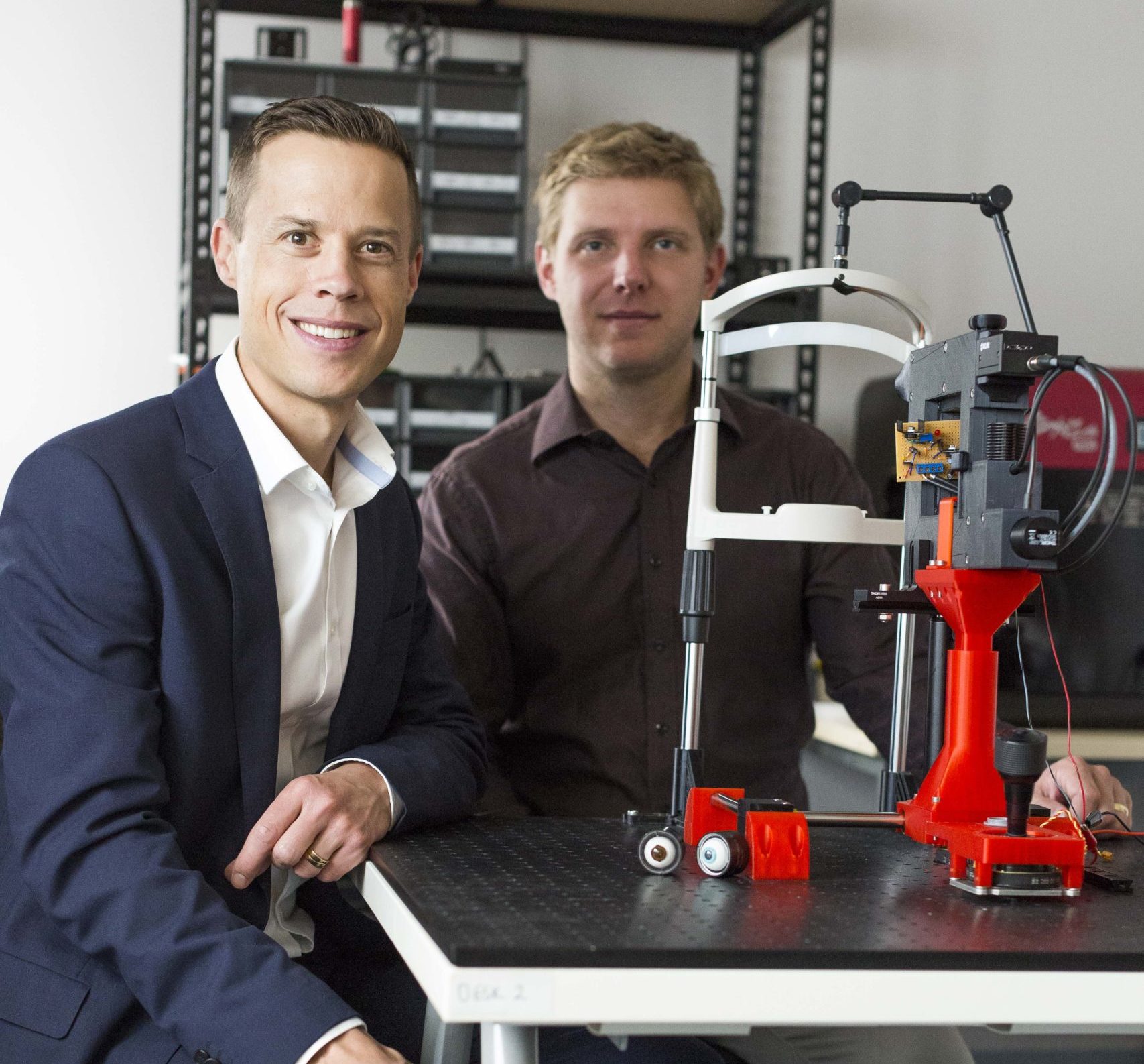This website uses cookies so that we can provide you with the best user experience possible. Cookie information is stored in your browser and performs functions such as recognising you when you return to our website and helping our team to understand which sections of the website you find most interesting and useful.
Research
United focus
A collaboration utilising innovative technology and clinical research has the potential to transform care for people with glaucoma.
One of the biggest challenges of caring for people with glaucoma is knowing who is at the highest risk of losing vision.
“Despite treatment, one in three people still go blind from glaucoma in at least one eye within 20 years of diagnosis,” says Associate Professor Zhichao Wu, Head of Clinical Biomarkers Research at CERA.
“There is a real need for us to find better ways of identifying those who are at a higher risk of progressing quickly, so we can monitor them more closely and intensify treatments if needed.”
Associate Professor Wu is leading a research study where hyperspectral imaging developed at CERA is being used to potentially identify new biomarkers – signs of disease that can be identified and measured – of glaucoma progression risk.
The collaboration between clinical research and technology developers has the potential to change how the disease is treated.
Hyperspectral imaging
Enlighten Imaging, a start-up incubated at CERA, developed the hyperspectral camera that is now part of the study.
The team, which includes CERA Deputy Director Associate Professor Peter van Wijngaarden and Senior Research Fellow Dr Xavier Hadoux, developed an imaging technology similar to that used by satellites to capture images of space.
“Instead of using a single flash of white light to capture an image, their camera takes many multi-coloured photographs from across the light spectrum at once to provide a new view of the eye,” says Associate Professor van Wijngaarden.
It has previously been trialled to detect signs of Alzheimer’s disease and reveal new insights into diabetic eye disease.
“There is an urgent need for new ways to monitor glaucoma and there are some well-known parallels between glaucoma and Alzheimer’s disease,” says Associate Professor van Wijngaarden.
“This is a promising avenue for research.”

New signs of diseases
Glaucoma damages the optic nerve which sends visual information to the brain.
The comprehensive eye examinations for glaucoma patients do little to help predict who is likely to lose their vision more quickly.
However, the hyperspectral camera could provide a new dimension to current eye tests.
“Cells damaged by glaucoma are sick and fighting to survive for some time before they are irreversibly lost,” says Associate Professor Wu.
“We’re investigating if it’s possible to use hyperspectral imaging to detect the subtle changes in the way these cells appear when they’re sick.
“If we can do this through a simple eye test, we may be able to better predict who is at highest risk of losing vision from glaucoma.”
If the research proves successful, it could enable more personalised care for patients and give those with glaucoma the best chance of protecting their sight.
Close collaborations
Having both clinical and technological expertise in the same building at CERA has some special benefits.
“We are developing this state-of-the-art technology in a lab which is right next to patients in the clinic,” says Associate Professor van Wijngaarden.
“This enables us to quickly respond to results and feedback from trials – it’s a unique environment to work in.”
This story was originally published in See the future: Annual Review 2022.

